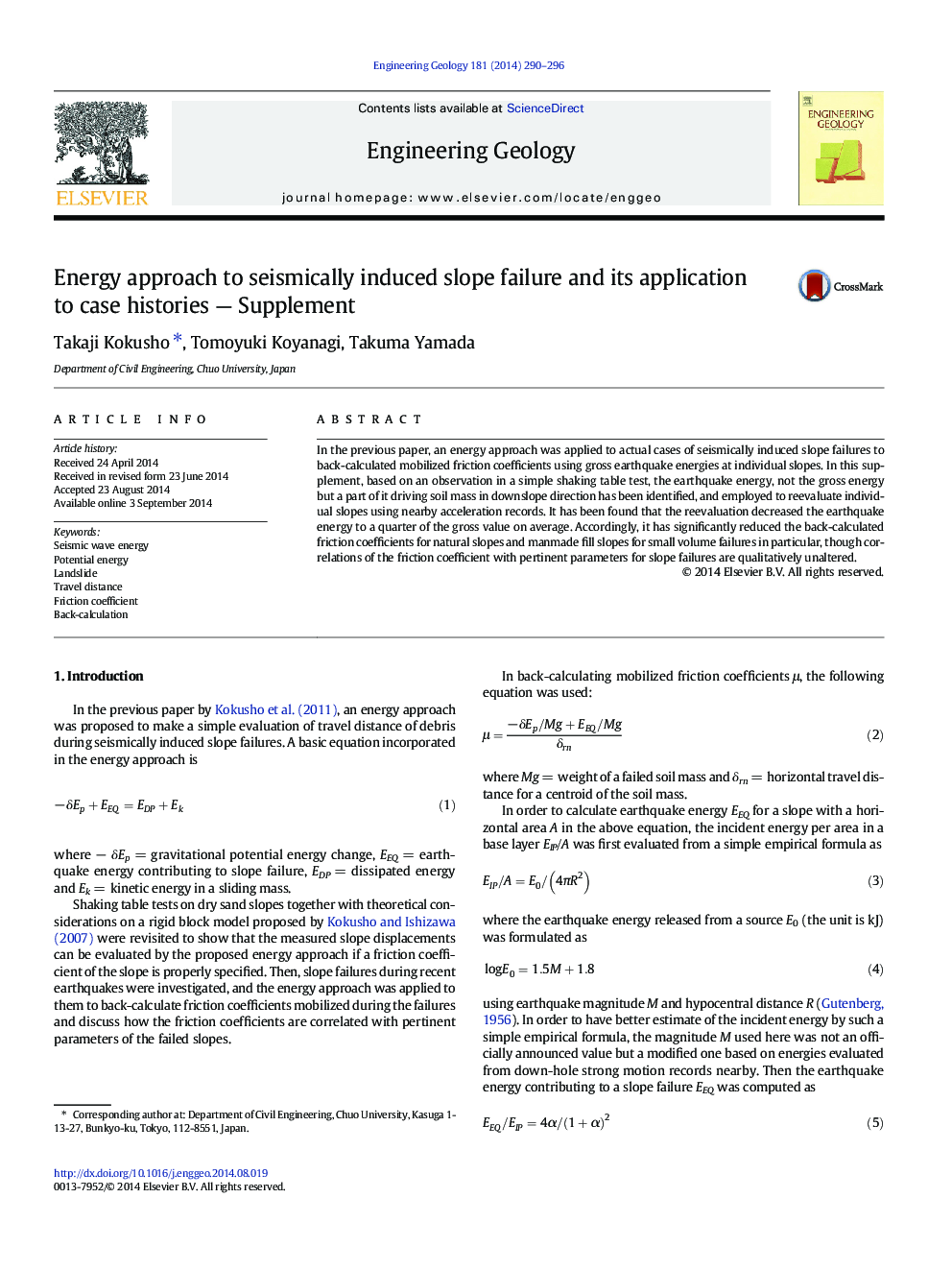| Article ID | Journal | Published Year | Pages | File Type |
|---|---|---|---|---|
| 4743524 | Engineering Geology | 2014 | 7 Pages |
•Model tests identified seismic energy in downslope direction serves to slope failure.•The downslope energies were reevaluated using seismic records near slope failures.•Slope frictions were computed by the energies (1/4 of the gross energies averagely).•It reduced back-calculated friction μ a lot for small-volume slopes in particular.•However, the trends of the μ-values with slope parameters are basically unaltered.
In the previous paper, an energy approach was applied to actual cases of seismically induced slope failures to back-calculated mobilized friction coefficients using gross earthquake energies at individual slopes. In this supplement, based on an observation in a simple shaking table test, the earthquake energy, not the gross energy but a part of it driving soil mass in downslope direction has been identified, and employed to reevaluate individual slopes using nearby acceleration records. It has been found that the reevaluation decreased the earthquake energy to a quarter of the gross value on average. Accordingly, it has significantly reduced the back-calculated friction coefficients for natural slopes and manmade fill slopes for small volume failures in particular, though correlations of the friction coefficient with pertinent parameters for slope failures are qualitatively unaltered.
